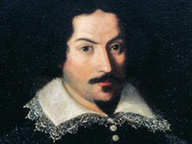Filippo Juvarra
Messina 07/03/1678 - Madrid 31/01/1736

Proveniente da una famiglia di orafi e cesellatori, ebbe in Sicilia una formazione di tipo artigianale. Nel 1703 si recò a Roma dove studiò presso la bottega di Carlo e Francesco Fontana e divenne membro dell’Accademia di San Luca.
Lavorando come scenografo e disegnatore di apparati effimeri per feste e cerimonie ottenne la prima committenza importante della sua carriera, la Cappella Antamori nella Chiesa di San Gerolamo della Carità, unica opera architettonica realizzata a Roma.
La consacrazione come uno dei massimi esponenti del Barocco italiano giunse con l’incontro di Vittorio Amedeo II di Savoia, che Juvarra seguì dapprima a Messina e poi a Torino.
Divenuto “primo architetto” della corte si occupò dell’ampliamento urbanistico della città verso occidente e creò alcuni degli edifici più belli della capitale sabauda, in cui l’equilibrio del classicismo e l’innovazione del barocco si fondono in soluzioni geniali: la Basilica di Superga, la Chiesa di Santa Cristina, la Chiesa del Carmine e la Palazzina di Caccia di Stupinigi.
Raggiunta fama internazionale fu chiamato in Spagna da Filippo V che gli commissionò progetti per il Palazzo Reale, la Granja di Sant’Ildefonso e il Palazzo di Aranjuez, realizzati dopo la sua morte da Giovan Battista Sacchetti e altri allievi.



